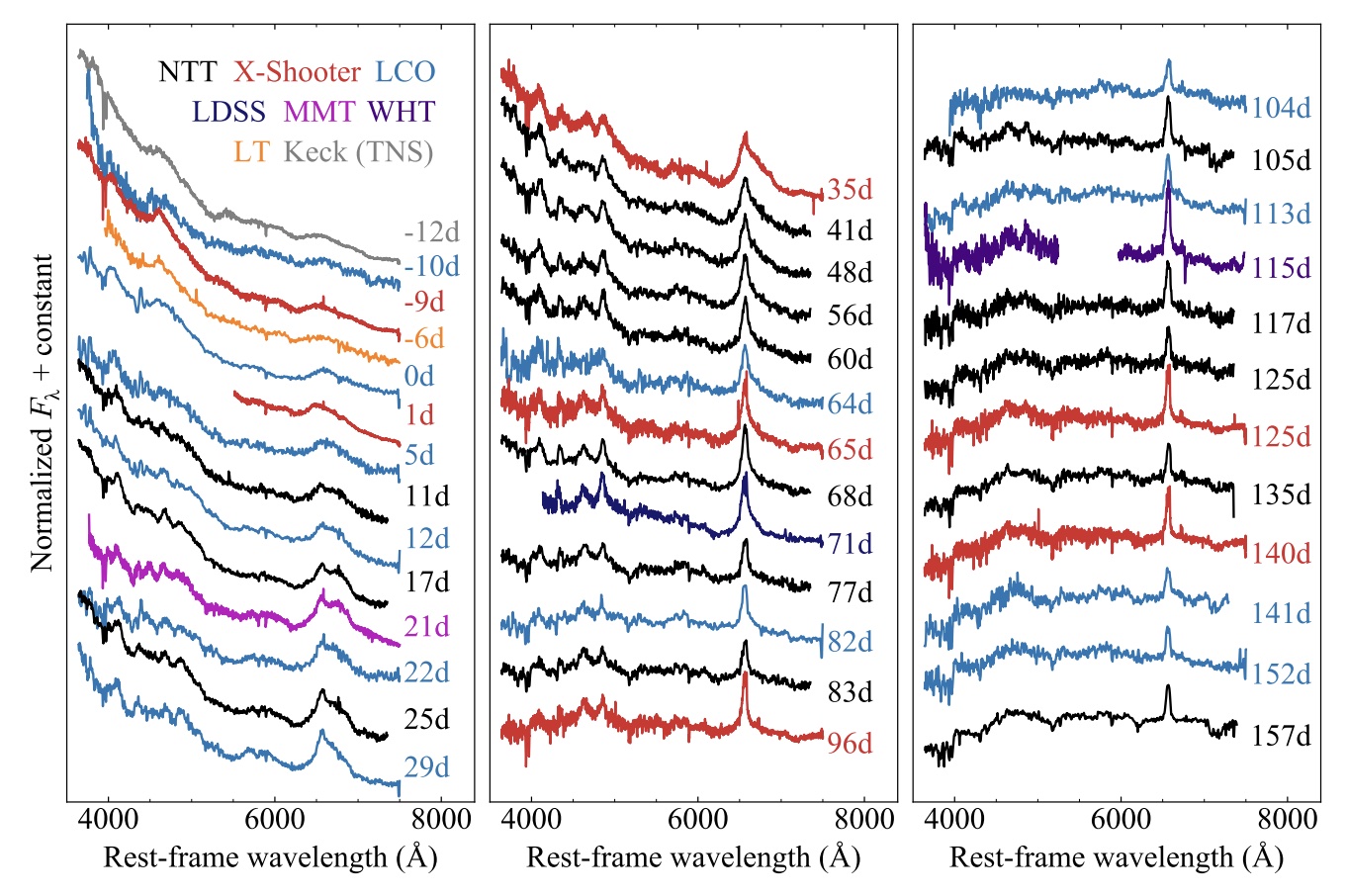First Data Release of ePESSTO+, the advanced Public ESO Spectroscopic Survey of Transient Objects
ePESSTO+ the advanced Public ESO Spectroscopic Survey of Transient Objects (PI: Inserra, ESO program IDs 1103.D-0328 and 106.216C) started in April 2019 and it is currently ongoing at the New Technology Telescope using the instruments EFOSC2 and SOFI. It is the second extension of the PESSTO survey (PI: Smartt).
ePESSTO+ targets supernovae and optical transients brighter than 20 mag for classification and selected science targets for detailed follow-up. It uses standard EFOSC2 setups with resolutions of 13-17Å between 3680-10320Å, SOFI spectroscopy for brighter science targets, with the blue and red (rarely) grisms (resolutions 23Å - 33Å), and SOFI imaging with broadband JHKs filters.
This first release includes spectra and images collected in the first 2.5 years of ePESSTO+ operations, from April 2019 to October 2021.
In this period spectra were taken for a total of 2138 objects; from that set, 178 ePESSTO+ Key Science targets were identified and followed-up for time series of EFOSC2 optical spectra, with the brighest also having SOFI spectra: 154 supernovae, 1 supernova imposter, 15 tidal disruption events (one of which is represented in the figure below), 2 LBV, 2 AGN, 4 supernova light echoes.
The higher resolution EFOSC grsims Gr#18 and Gr#20 were employed occasionally to allow higher spectral resolution for objects with H-Balmer lines in emission.
In total this release contains 14 GB of data: 2157 EFOSC2 spectra, 18 SOFI spectra, 480 SOFI images. The data products are available from the ESO Archive Science Portal or the Programmatic Access services, under the collection name ePESSTOplus, though the official name remains ePESSTO+.
More details about the release content can be found in the associated data release description.
The DOI assigned to the ePESSTO+ data collection is https://doi.org/10.18727/archive/86

Image from: Nicholl, M., Wevers, T., Oates, S. R., et al. (2020),
"An outflow powers the optical rise of the nearby, fast-evolving tidal disruption event AT2019qiz",
MNRAS, 499, 482-504 - 2020MNRAS.499..482N
